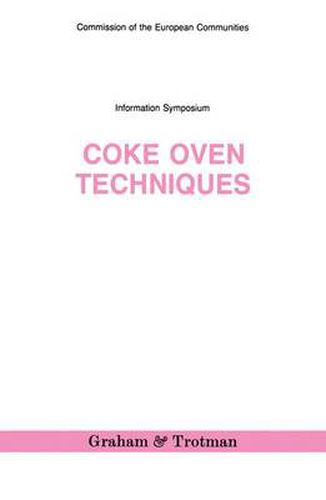Readings Newsletter
Become a Readings Member to make your shopping experience even easier.
Sign in or sign up for free!
You’re not far away from qualifying for FREE standard shipping within Australia
You’ve qualified for FREE standard shipping within Australia
The cart is loading…






This title is printed to order. This book may have been self-published. If so, we cannot guarantee the quality of the content. In the main most books will have gone through the editing process however some may not. We therefore suggest that you be aware of this before ordering this book. If in doubt check either the author or publisher’s details as we are unable to accept any returns unless they are faulty. Please contact us if you have any questions.
The increasing scale and intensity of modern blast-furnace operation, combined with a simultaneous reduction in coke rate, have led to more stringent coke quality requirements with a greater emphasis on the coke’s (1 2) role as a burden spacer ‘ * Accordingly, coke quality data limited to chemical composition, initial size grading and ambient size stability are insufficient to predict the coke’s behaviour in use. A realistic assess ment of the likely performance of coke should also take into consideration its resistance to degradation in the chemical and thermal environment of the blast furnace. A test is, therefore, needed which simulates as far as possible the mechanical, chemical and thermal conditions of the smelting process and measures the resultant changes in size distribution of the coke, and hence in its bulk permeability to gas flow, using representative samples of the feed coke as charged to the furnace. Moreover, new developments in coke production make it necessary to reassess coke testing so as to guide the coke producer in making the best use of available coals. The mode of mechanical coke breakage at ambient temperature has been extensively characterised and related to changes in the coke’s bulk permeability(3). In contrast, the causes of deterioration in the hot strength and size of bulk coke arising from its partial gasification with carbon dioxide and reheating to high temperature are relatively less explored. The present paper describes the v.
$9.00 standard shipping within Australia
FREE standard shipping within Australia for orders over $100.00
Express & International shipping calculated at checkout
This title is printed to order. This book may have been self-published. If so, we cannot guarantee the quality of the content. In the main most books will have gone through the editing process however some may not. We therefore suggest that you be aware of this before ordering this book. If in doubt check either the author or publisher’s details as we are unable to accept any returns unless they are faulty. Please contact us if you have any questions.
The increasing scale and intensity of modern blast-furnace operation, combined with a simultaneous reduction in coke rate, have led to more stringent coke quality requirements with a greater emphasis on the coke’s (1 2) role as a burden spacer ‘ * Accordingly, coke quality data limited to chemical composition, initial size grading and ambient size stability are insufficient to predict the coke’s behaviour in use. A realistic assess ment of the likely performance of coke should also take into consideration its resistance to degradation in the chemical and thermal environment of the blast furnace. A test is, therefore, needed which simulates as far as possible the mechanical, chemical and thermal conditions of the smelting process and measures the resultant changes in size distribution of the coke, and hence in its bulk permeability to gas flow, using representative samples of the feed coke as charged to the furnace. Moreover, new developments in coke production make it necessary to reassess coke testing so as to guide the coke producer in making the best use of available coals. The mode of mechanical coke breakage at ambient temperature has been extensively characterised and related to changes in the coke’s bulk permeability(3). In contrast, the causes of deterioration in the hot strength and size of bulk coke arising from its partial gasification with carbon dioxide and reheating to high temperature are relatively less explored. The present paper describes the v.